The world was three days into the D-Day invasion, and the battlefield situation remained both fluid and chaotic.
How Operation Overlord might ultimately turn out was anybodys guess.
Defending the small but vital French town was a beleaguered force of Canadians from the 6thCanadian Armoured Regiment.
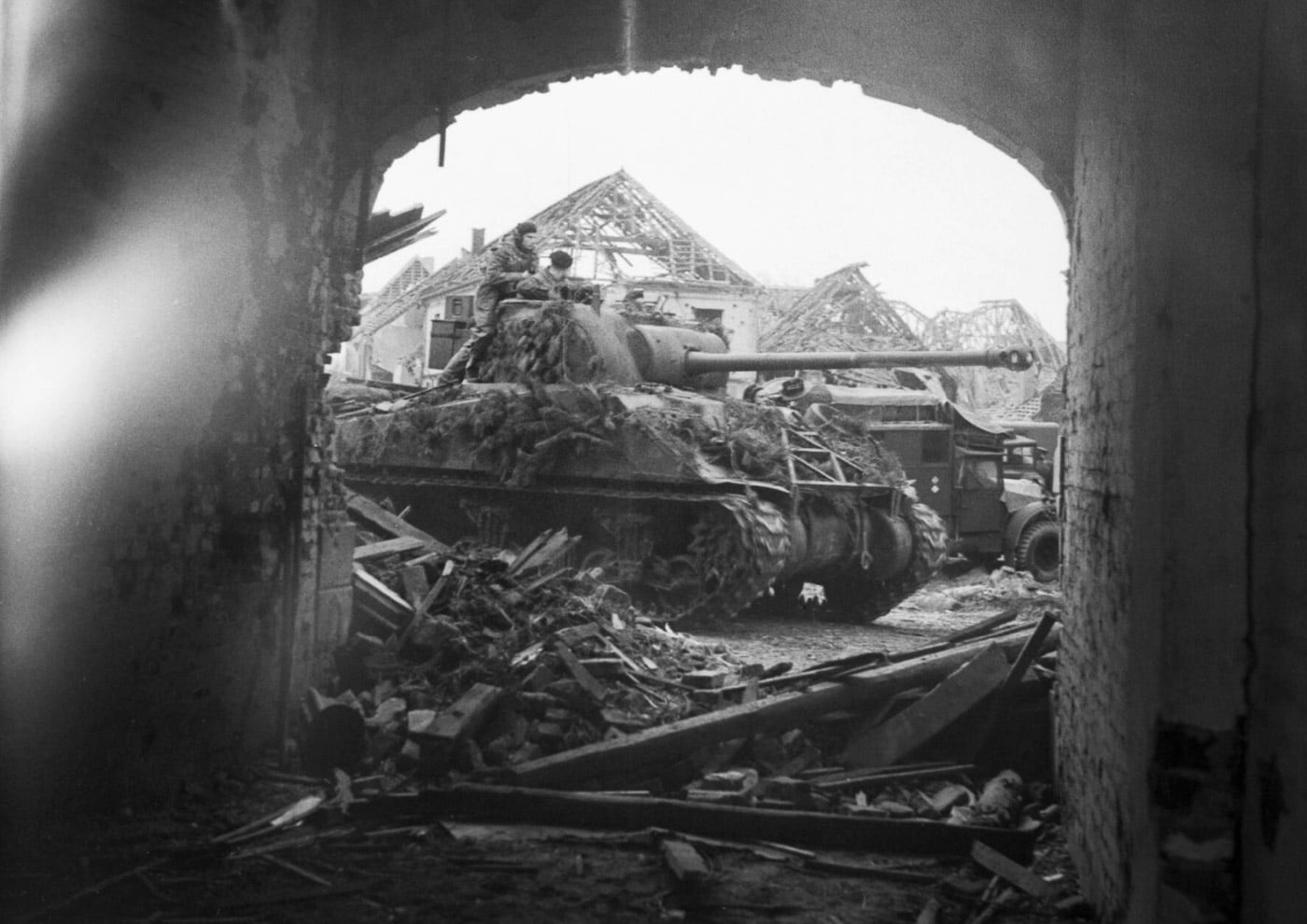
British troops in a Sherman Firefly advance through the ruined town of Uedem, Germany during the drive to the Rhine in March 1945. Image: Sgt. Jones/NARA
The German attack went in at 1300 hours.
As the German Panthers approached the town at speed, Allied artillery saturated the surrounding area.
This forced the associated German infantry to go to ground, leaving the advancing Panthers unsupported.
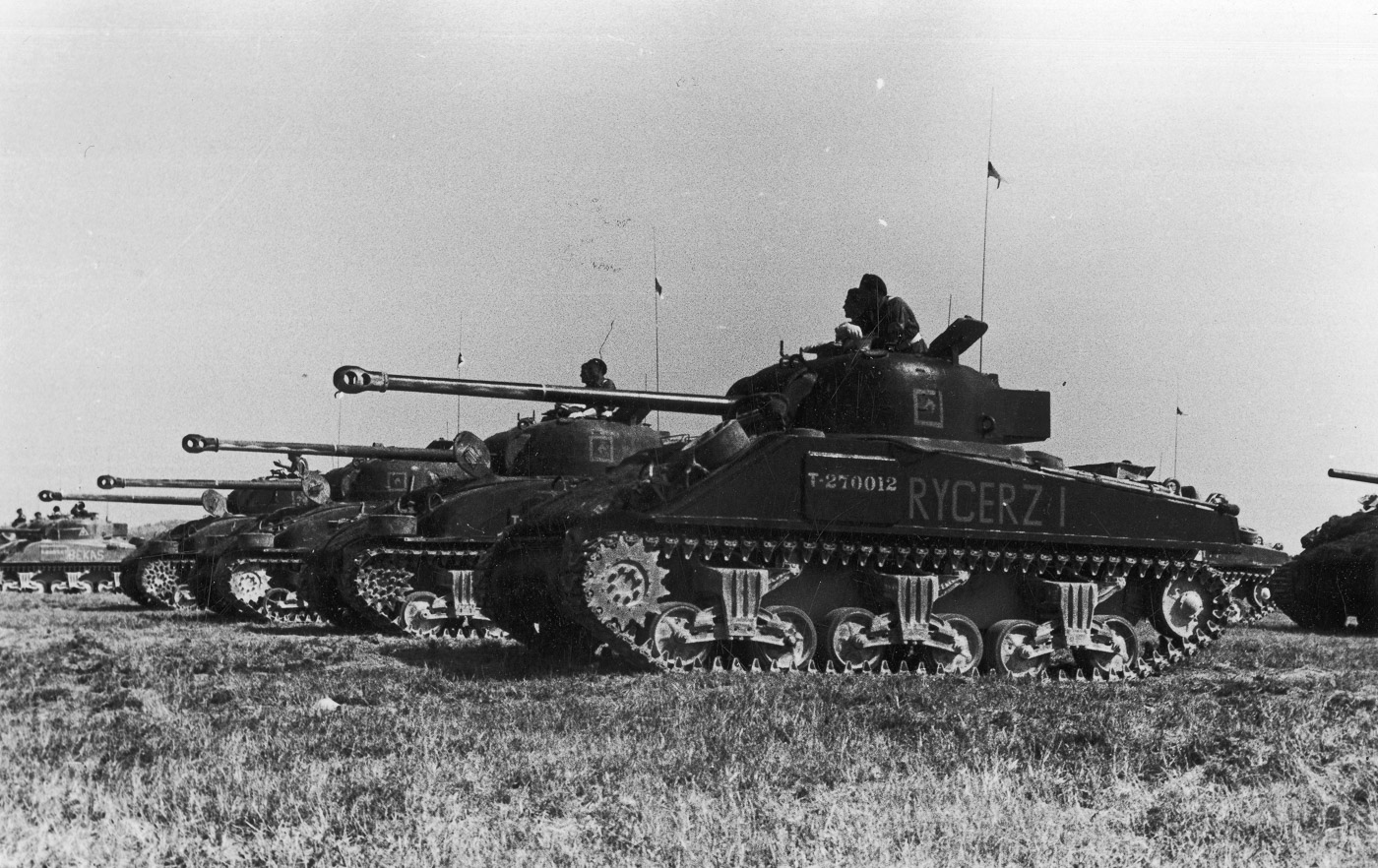
Polish troops in Sherman Firefly tanks at the end of World War II. During the war, they fought with Allied armies at the Battle of Monte Cassino and elsewhere. Image: Polish National Digital Archives
At a range of around 1,000 meters, the Allied tanks opened up from positions of concealment.
The short-barreled Shermans accounted for a further two.
The surviving five Panthers retreated in disarray, leaving Norrey-en-Bessin firmly in the hands of the Allies.
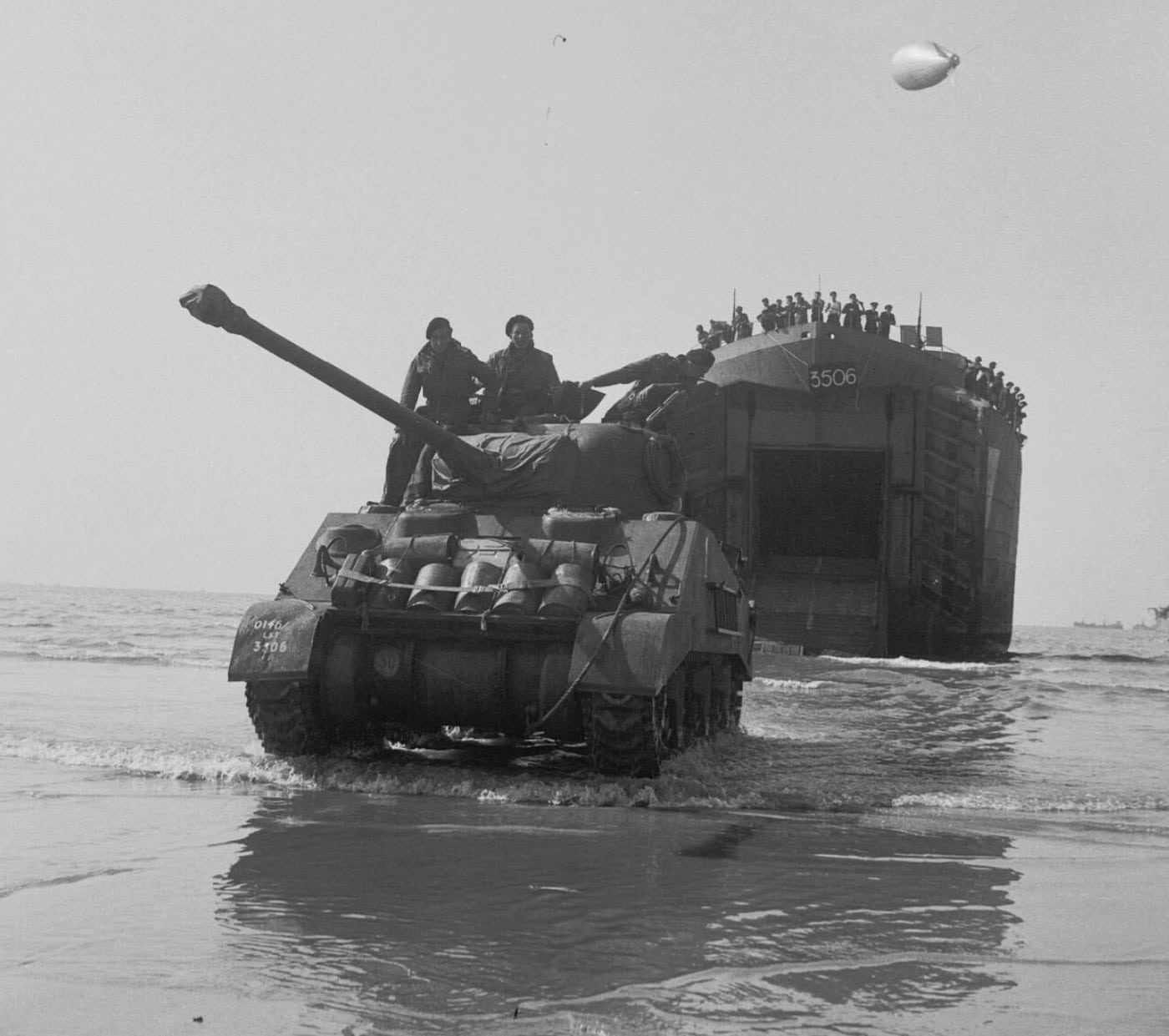
A Sherman Firefly of the British 22nd Armoured Brigade, 7th Armoured Division comes ashore from an Landing Ship, Tank (LST) on Gold Beach, June 7, 1944. Image: NARA
For the German Panzerwaffe deployed in the defense of France in 1944, the game had just changed.
Sherman Tank Misconceptions
Its imbedded into our collective consciousness so deeply as to have become a trope.
Weve all heard the legends.
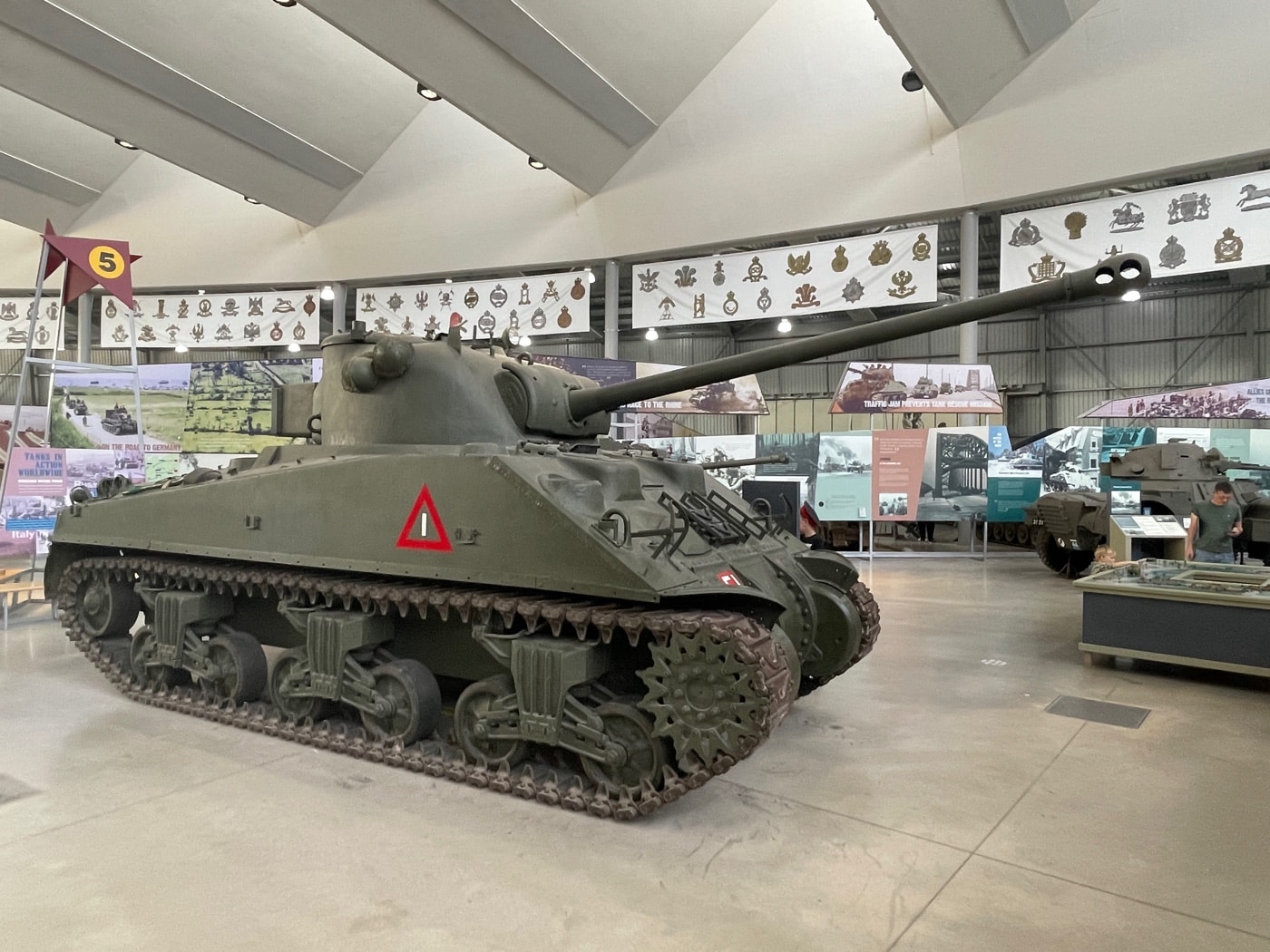
This is the Sherman Firefly at The Tank Museum in England. The Sherman tank was built in 1944 by Chrysler and converted to the Firefly in the UK. It’s livery is that of the Guards Armoured Division in 1944.
During World War II, American Shermans paled in comparison to the vaunted German cats.
He did, however, admit that he lost his mounts to anti-tank guns, Teller mines, andpanzerfausts.
Was that formidable reputation actually based in fact?
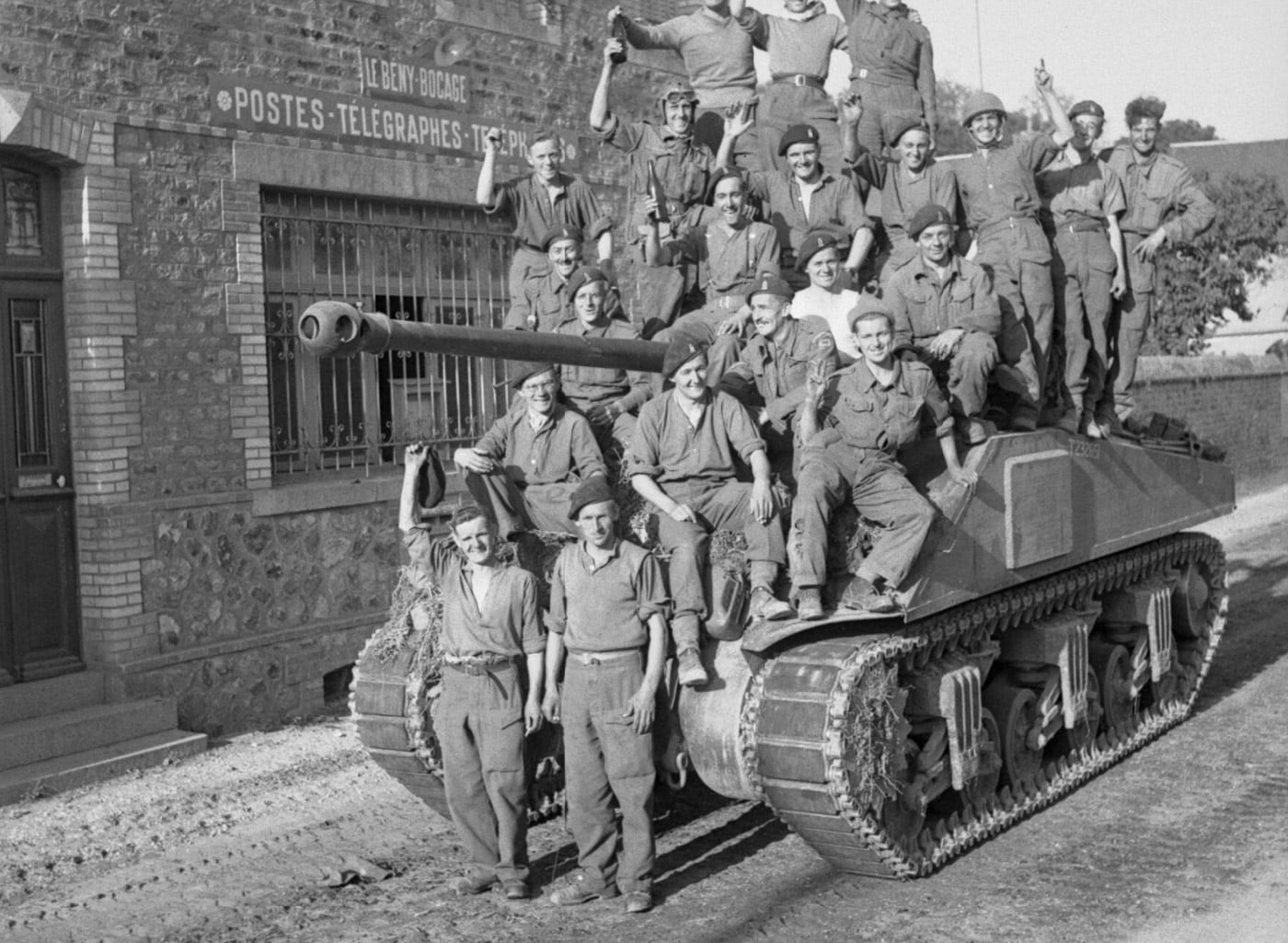
British tank crews crowd onto a Sherman Firefly to celebrate the capture of Le Bény-Bocage in August 1944. Image: Sgt. Laing/IWM
The numbers tell a different story.
As a result, tank-on-tank exchanges between Shermans and the big German cats were relatively rare.
When the dust settled, we actually lost 1.7 Shermans for every Tiger destroyed in dedicated armor battles.
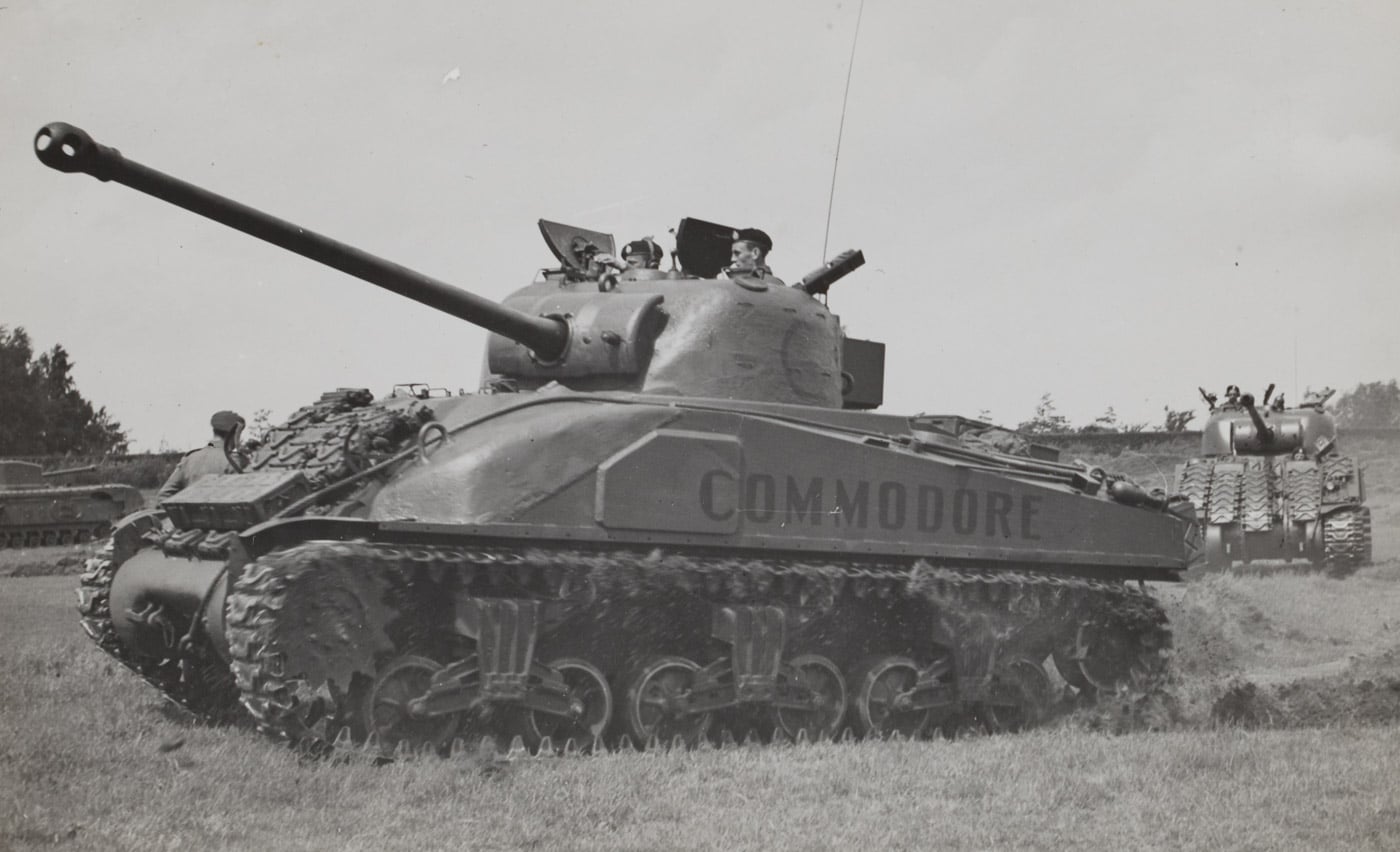
A British Firefly tank named Commodore in Netherlands during World War II. The photo was possibly taken during a demonstration shortly after VE Day. Image: Netherlands National Archives
The kill ratio for the German Panther was actually 3.6 Panthers for every Sherman lost in tank-on-tank engagements.
That tank, the Sherman Firefly, was the Tiger killer.
Firefly Background
We produced 49,234 Sherman tanks during World War II.
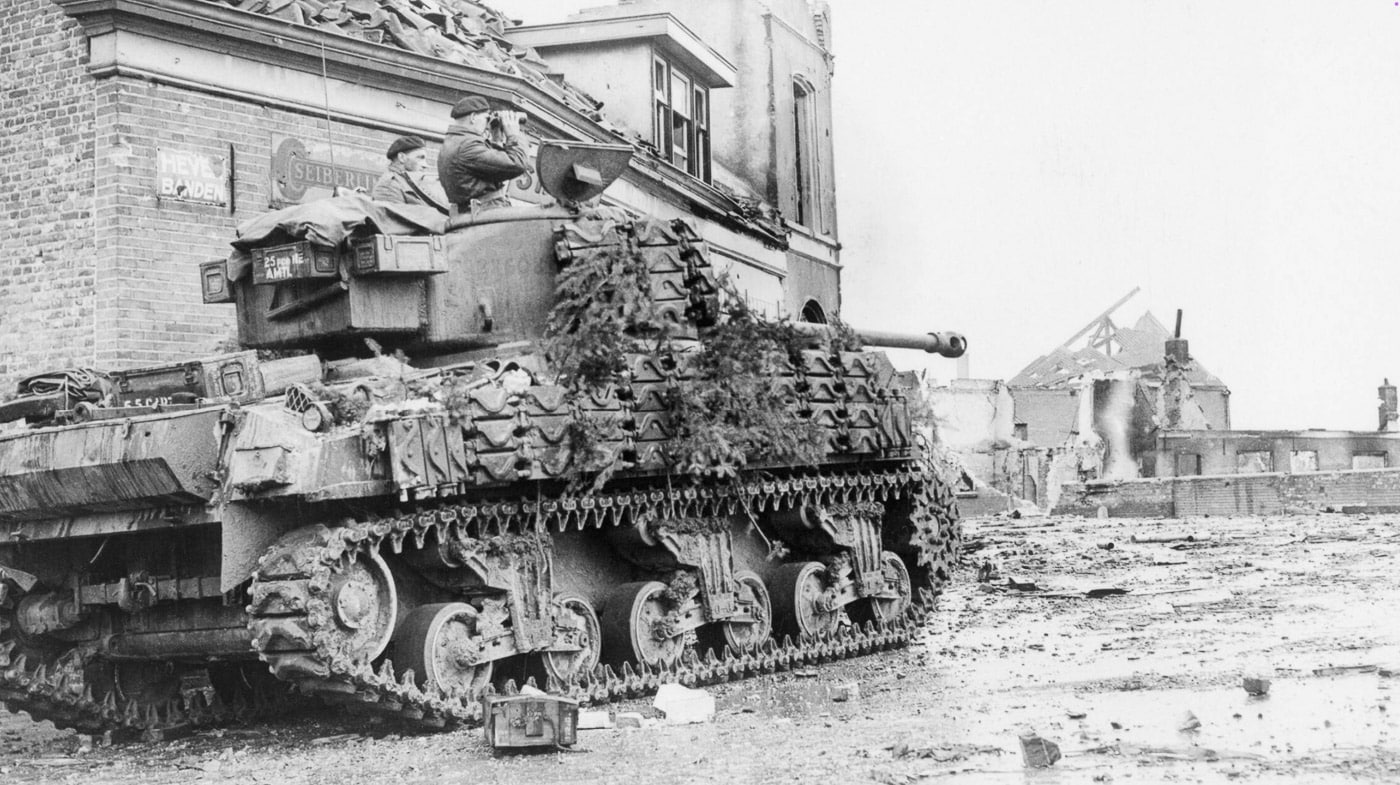
Tank crew of the 1st Polish Armoured Division surveying the enemy positions from a turret of their Sherman Firefly tank in the Dutch town of Moerdijk. Image: National Archives of Poland
The only tank produced in greater numbers was theRussian T34at some 84,000 units.
2,150 of the American Shermans were converted into British Fireflies.
The Sherman was designed as an infantry support tank.
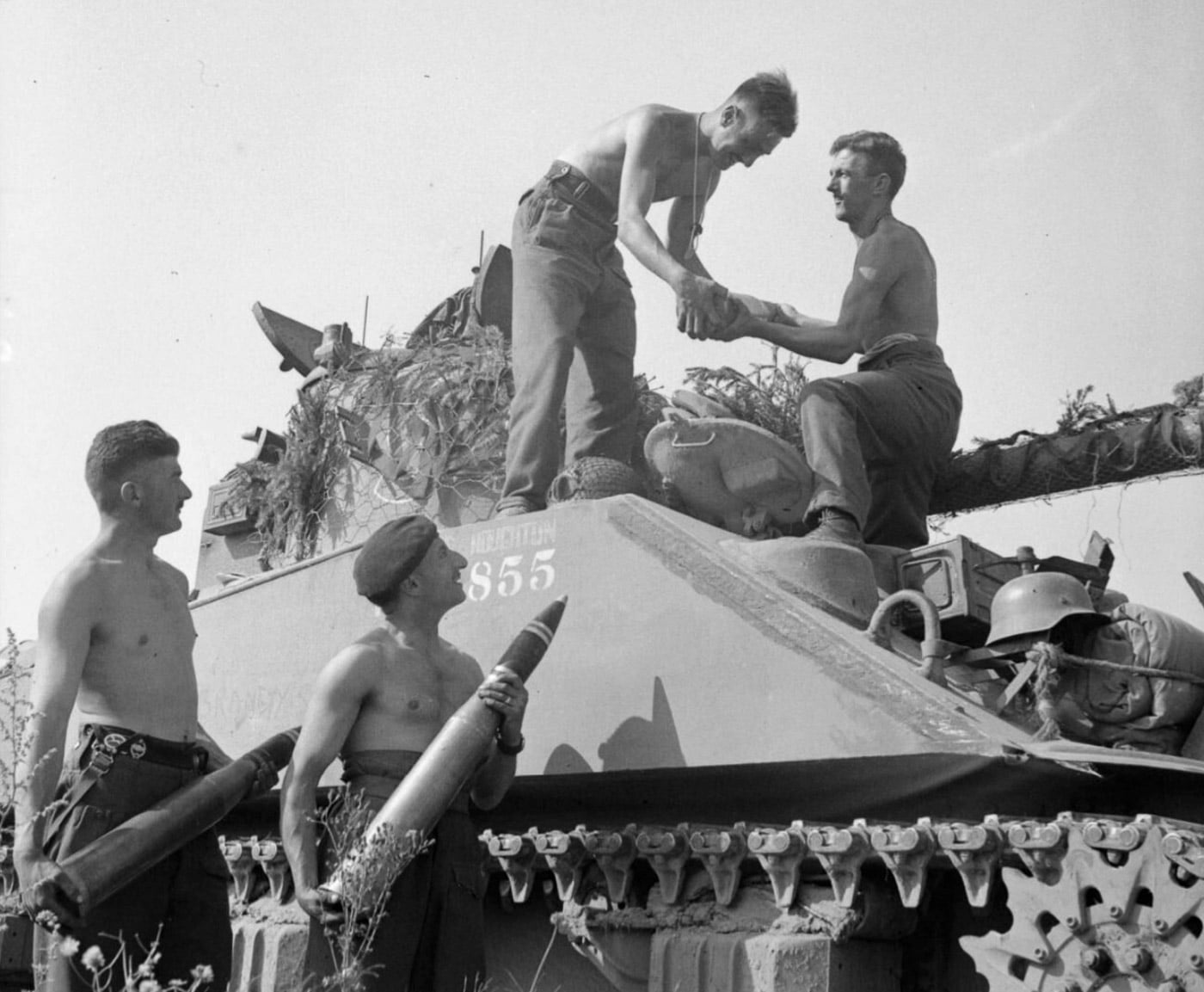
A Sherman Firefly crew of 1st Northamptonshire Yeomanry load 17 pdr. ammunition into their vehicle before the start of Operation Totalize. Image: NARA
Anti-armor operations were supposed to be the purview of tank destroyers like the M10 and M18.
These two guys were seriously motivated to get this done.
He eventually recovered from his wounds, but he was declared unfit for further combat.

A Sherman Firefly drives through Geldern, Germany in March 1945. Image: Sgt. Christie/NARA
This allowed him to devote all of his efforts to upgunning the Sherman.
Together with a Vickers engineer named WGK Kilbourn, these three men went to work solving problems.
The 17-pounder quick-firing cannon sported a bore diameter of 76mm just like later model American Sherman guns.
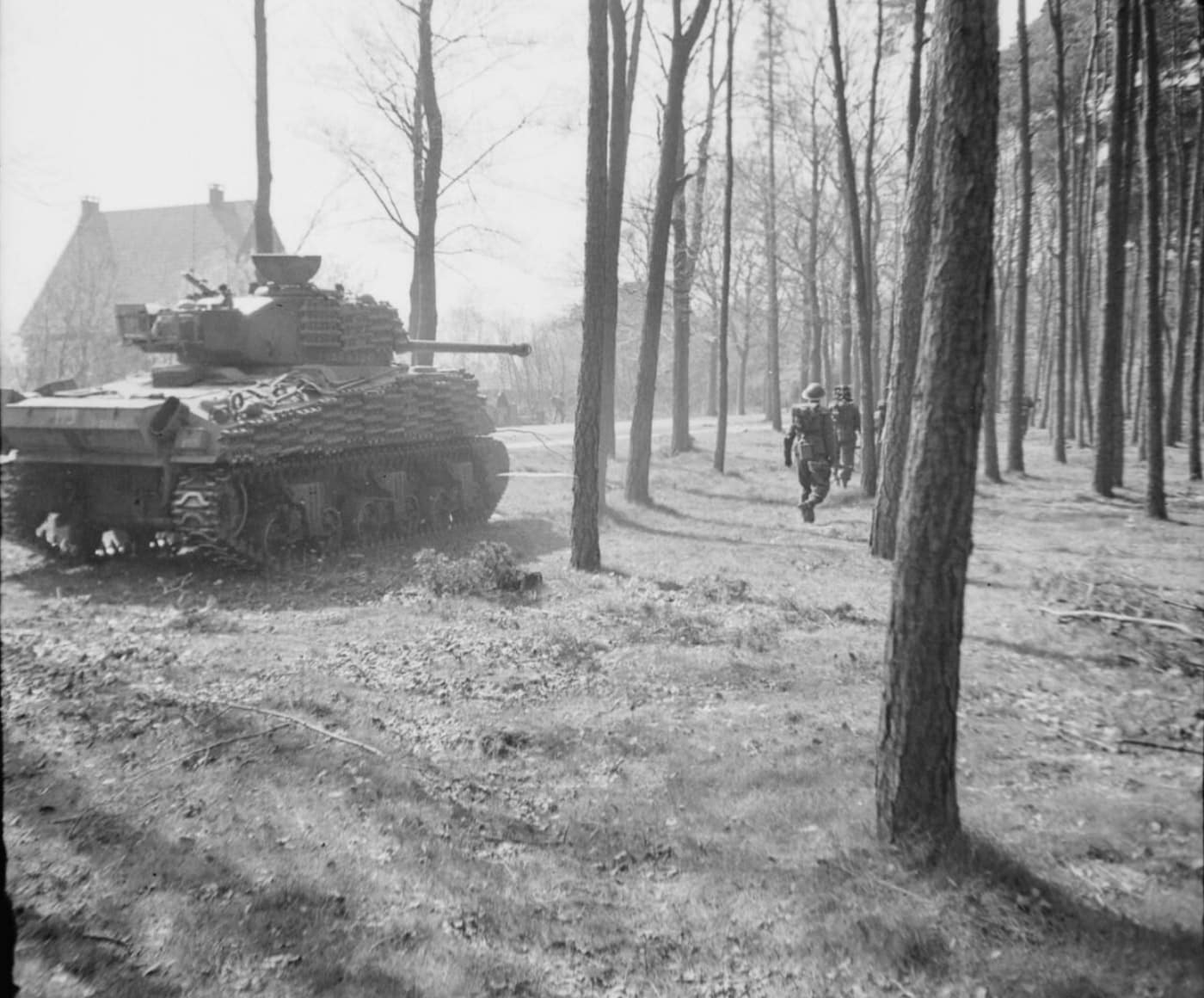
A Sherman Firefly of 5th Canadian Armoured Division assists troops of 11th Royal Scots Fusiliers, 49th (West Riding) Division to clear the Germans from Ede in April 1945. Image: Lt. Handford/IWM
However, this superb British anti-tank weapon had a longer barrel and fired more voluminous ammunition.
However, that big 17-pounder gun was hardly a plug-and-play fit in the compact Sherman turret.
The 17-pounder in a ground mount had a 40-inch recoil stroke.
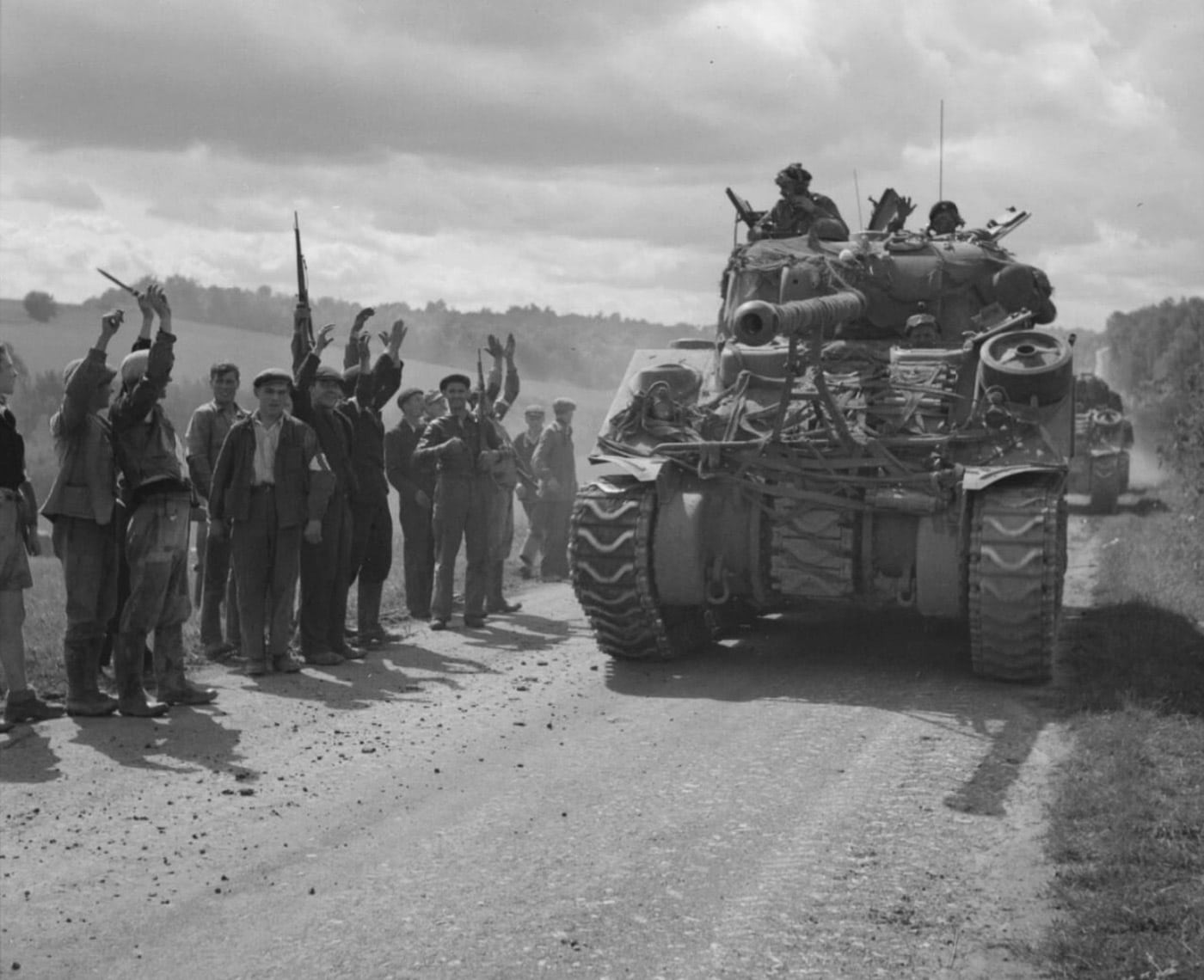
Members of the French Forces of the Interior cheer as a Sherman Firefly of Guards Armoured Division passes along a road near Beauvais, France in August 1944. Image: Sgt. Laing/IWM
There just wasnt space inside a Sherman turret to accommodate this much violent motion.
Kilbourns first solution was simply to bin the recoil system entirely and bolt the gun rigidly to the turret.
Kilbourn subsequently redesigned the guns mounting system to include a pair of shortened recoil cylinders.

A Sherman Firefly and M4 Sherman tanks of the British 29th Armoured Brigade near Venray, Netherlands in October 1944. Image: Sgt. Palmer/IWM
He then rotated the weapon 90 degrees such that the breech opened on the left rather than the top.
Typically, the radio rode in the rear of the turret.
Aside from the enlarged gun, the Firefly was a standard Sherman.
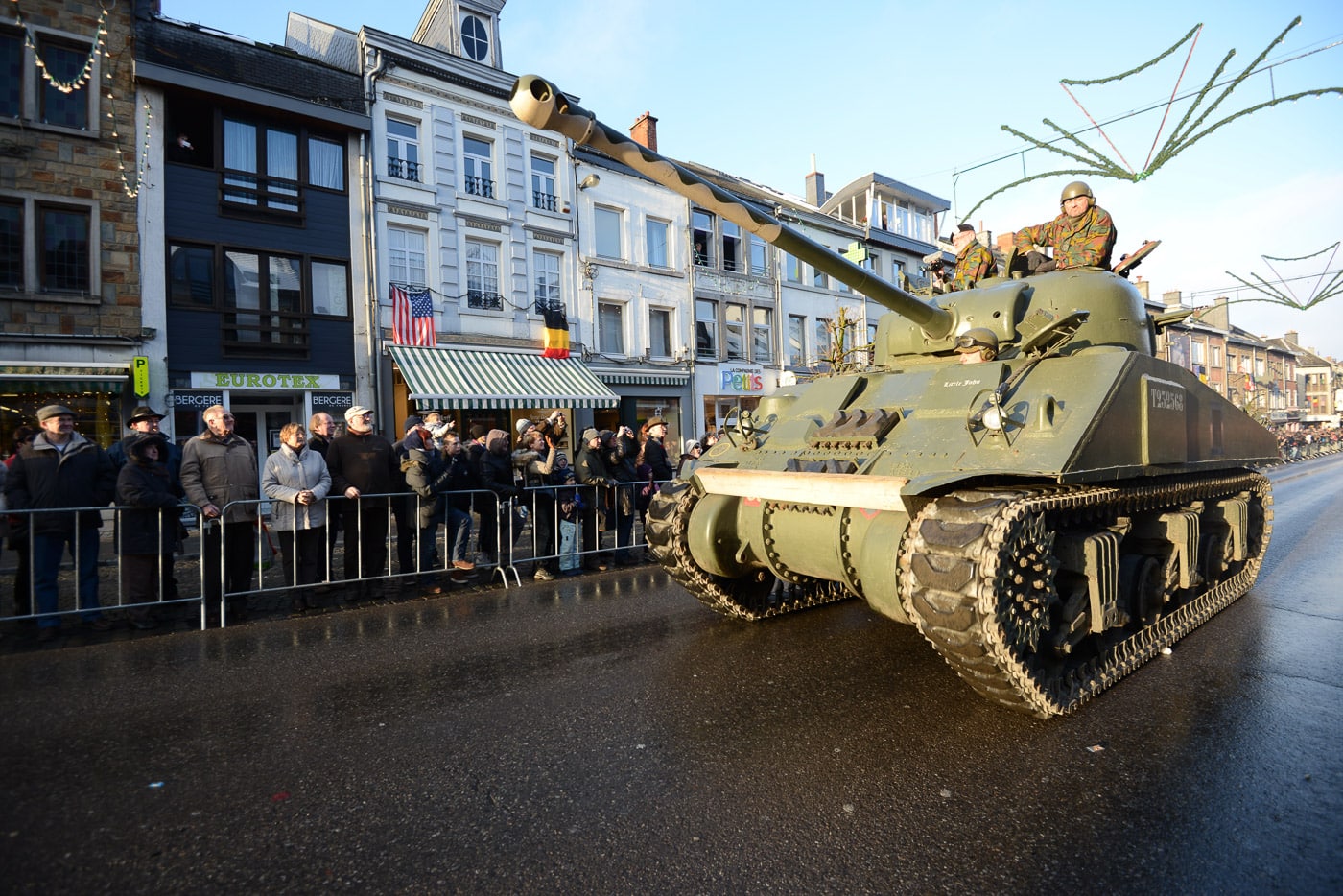
A Sherman Firefly maintained by the Belgian Royal Museum is crewed by Belgian Land Forces soldiers commemorating the Battle of the Bulge in 2014. Image: Pierre-Etienne Courtejoie/U.S. Army
This made it reliable and easy to maintain.
The name Firefly was an informal moniker that eventually stuck.
Great care had to be exercised lest the long barrel catch on street signs and similar obstacles.
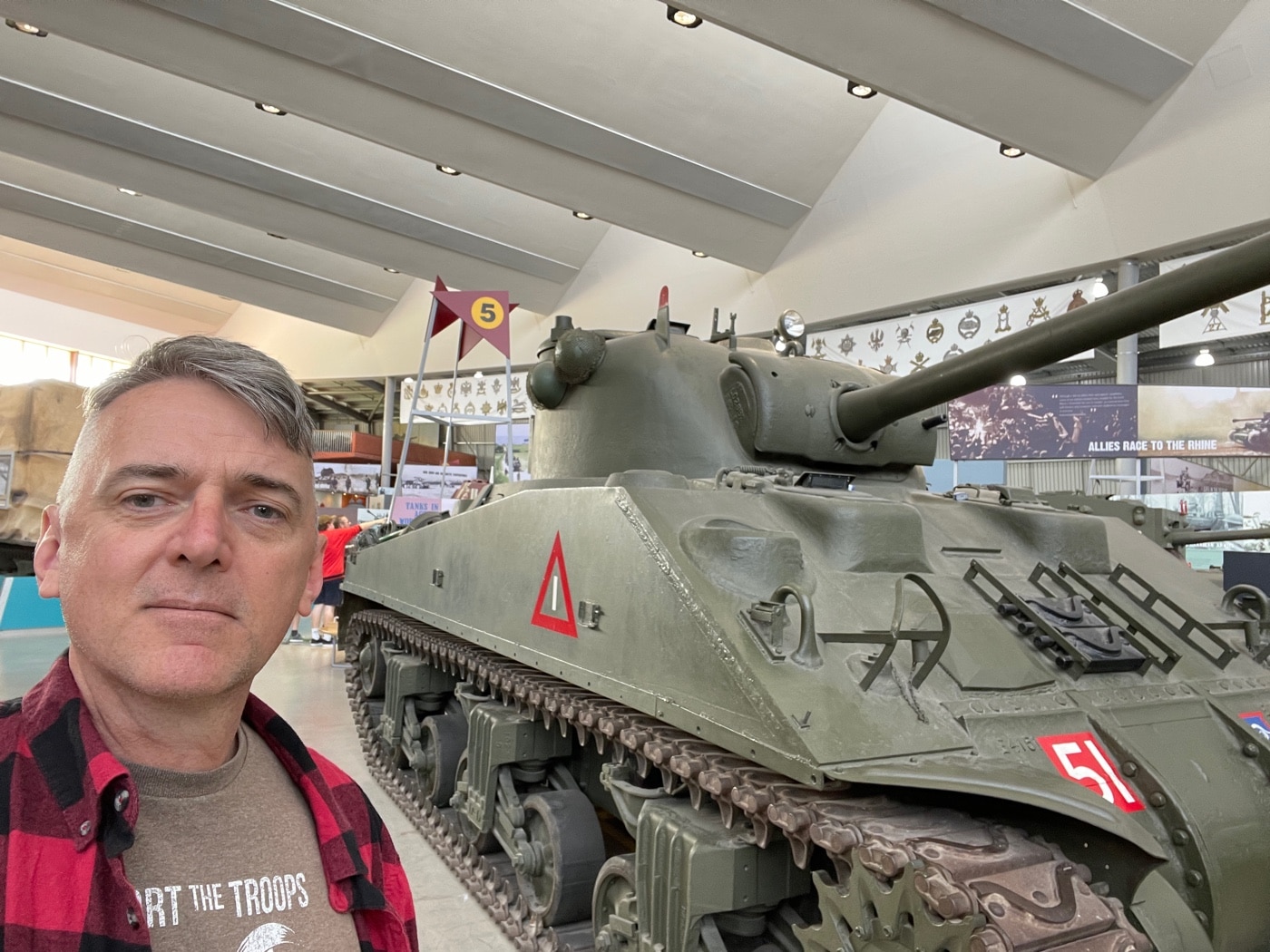
The author with a Sherman Firefly tank in The Tank Museum in Bovington, England. The Tank Museum is one of the best repositories for the preservation of military armor in the world.
It was also bad to ram into the ground when going up or down inclines.
Allied troops called these modified tanks Sherman Tulips.
342 Fireflies were available in time for the D-Day landings.
Standard British tank troops around this time consisted of three conventional Shermans and one Firefly.
By February of 1945, most Commonwealth armored units were equipped half-and-half with Fireflies and regular Shermans.
The Firefly was a great example of British ingenuity.
The end result helped level the playing field in Normandy, Belgium, and eventually on into Germany.




